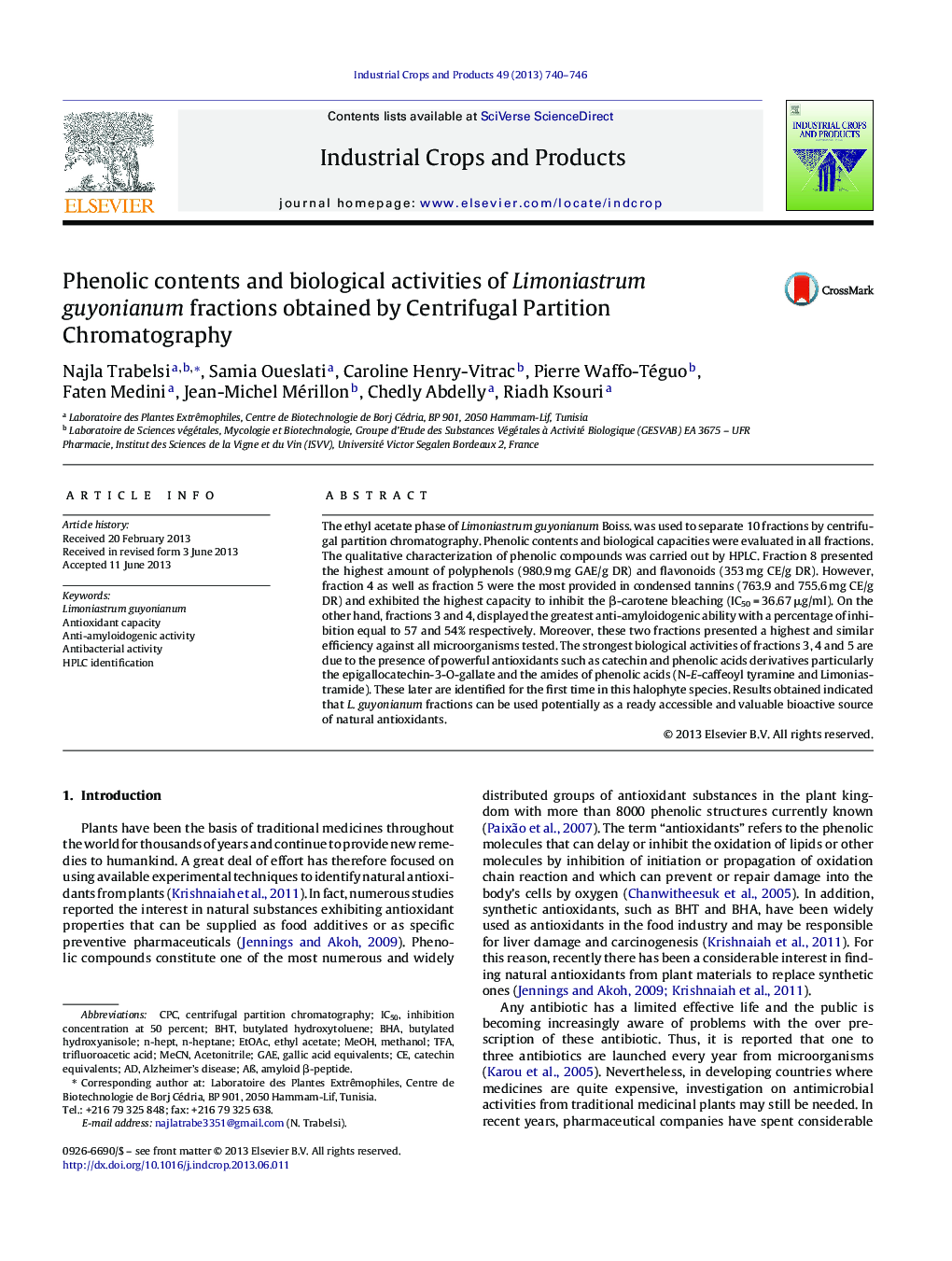| Article ID | Journal | Published Year | Pages | File Type |
|---|---|---|---|---|
| 6377397 | Industrial Crops and Products | 2013 | 7 Pages |
Abstract
The ethyl acetate phase of Limoniastrum guyonianum Boiss. was used to separate 10 fractions by centrifugal partition chromatography. Phenolic contents and biological capacities were evaluated in all fractions. The qualitative characterization of phenolic compounds was carried out by HPLC. Fraction 8 presented the highest amount of polyphenols (980.9 mg GAE/g DR) and flavonoids (353 mg CE/g DR). However, fraction 4 as well as fraction 5 were the most provided in condensed tannins (763.9 and 755.6 mg CE/g DR) and exhibited the highest capacity to inhibit the β-carotene bleaching (IC50 = 36.67 μg/ml). On the other hand, fractions 3 and 4, displayed the greatest anti-amyloidogenic ability with a percentage of inhibition equal to 57 and 54% respectively. Moreover, these two fractions presented a highest and similar efficiency against all microorganisms tested. The strongest biological activities of fractions 3, 4 and 5 are due to the presence of powerful antioxidants such as catechin and phenolic acids derivatives particularly the epigallocatechin-3-O-gallate and the amides of phenolic acids (N-E-caffeoyl tyramine and Limoniastramide). These later are identified for the first time in this halophyte species. Results obtained indicated that L. guyonianum fractions can be used potentially as a ready accessible and valuable bioactive source of natural antioxidants.
Keywords
CPCMECNEtOAcBHTGAETFABHAIC50N-heptaneamyloid β-peptideEthyl acetateAcetonitrileTrifluoroacetic acidgallic acid equivalentsAlzheimer's diseaseAntioxidant capacityAntibacterial activityAsMethanolcatechin equivalentsMeOHbutylated hydroxyanisolebutylated hydroxytolueneCentrifugal partition chromatography
Related Topics
Life Sciences
Agricultural and Biological Sciences
Agronomy and Crop Science
Authors
Najla Trabelsi, Samia Oueslati, Caroline Henry-Vitrac, Pierre Waffo-Téguo, Faten Medini, Jean-Michel Mérillon, Chedly Abdelly, Riadh Ksouri,
